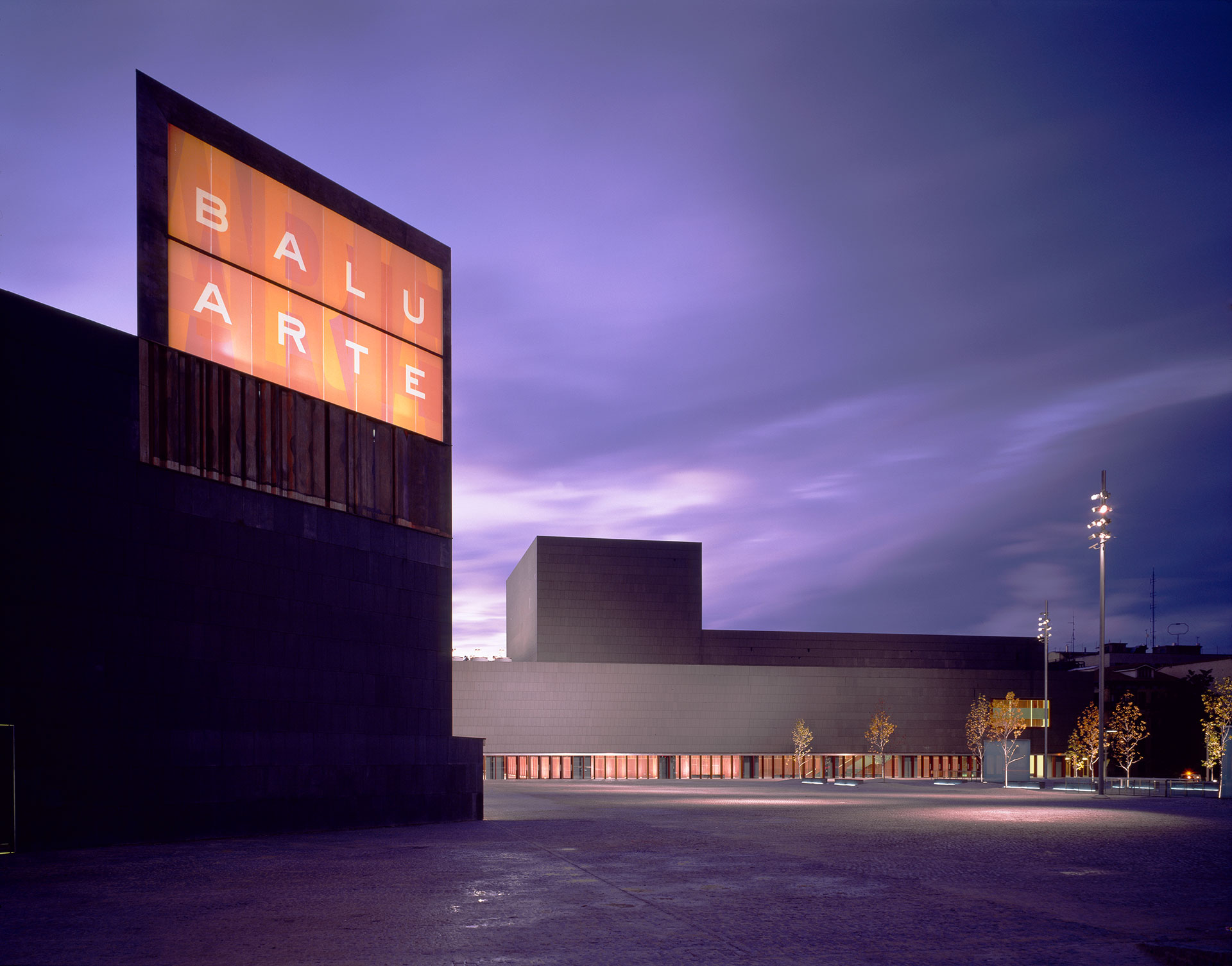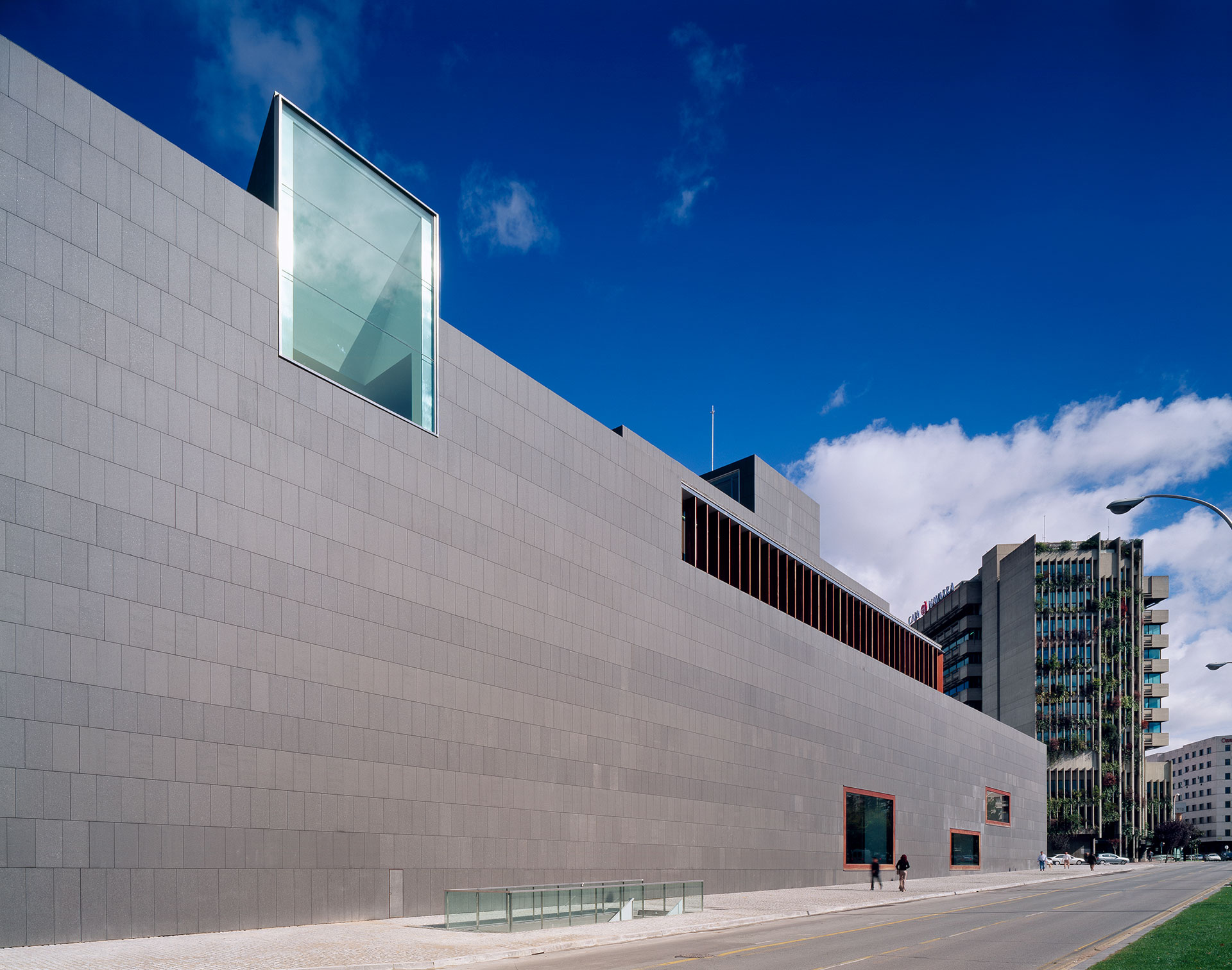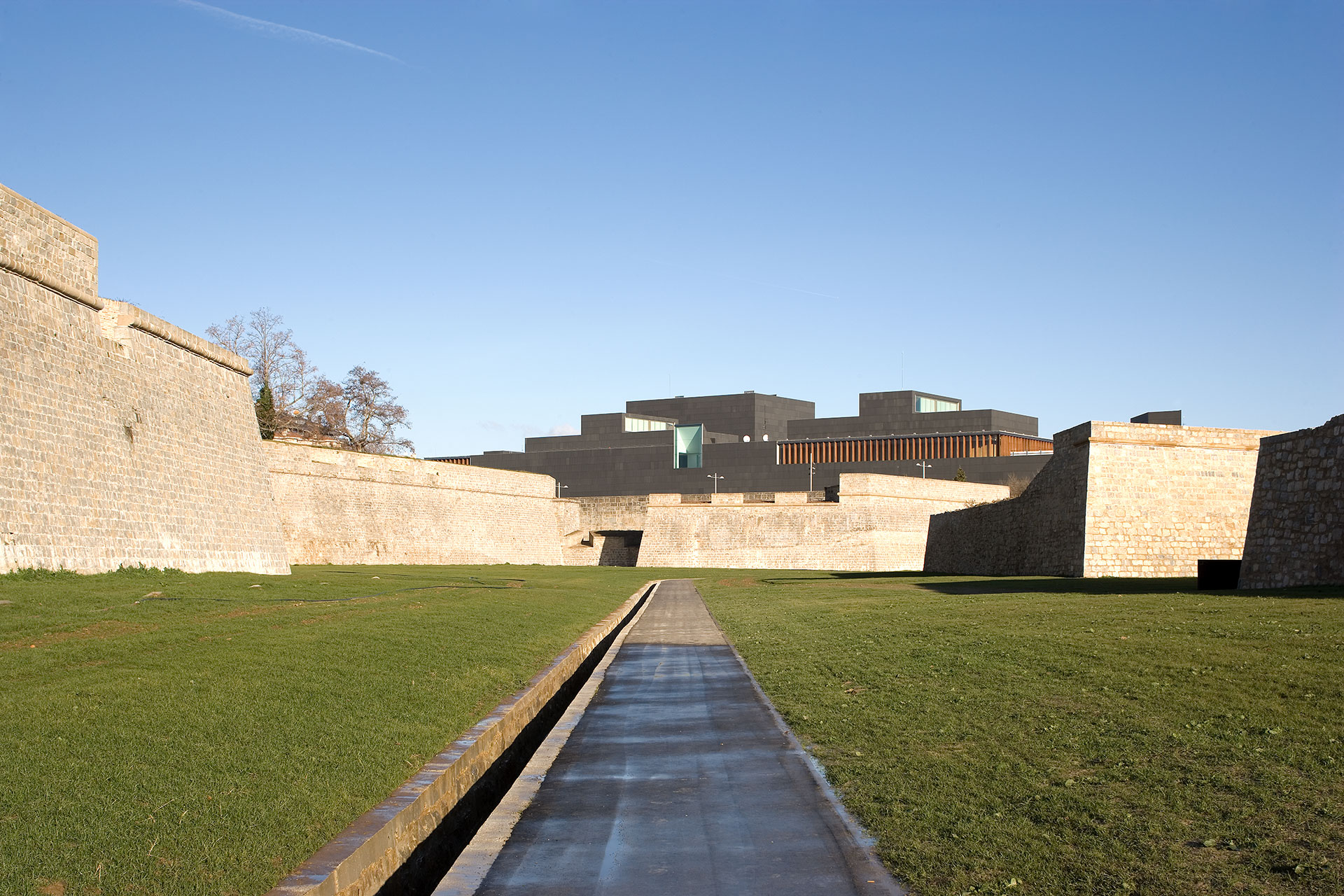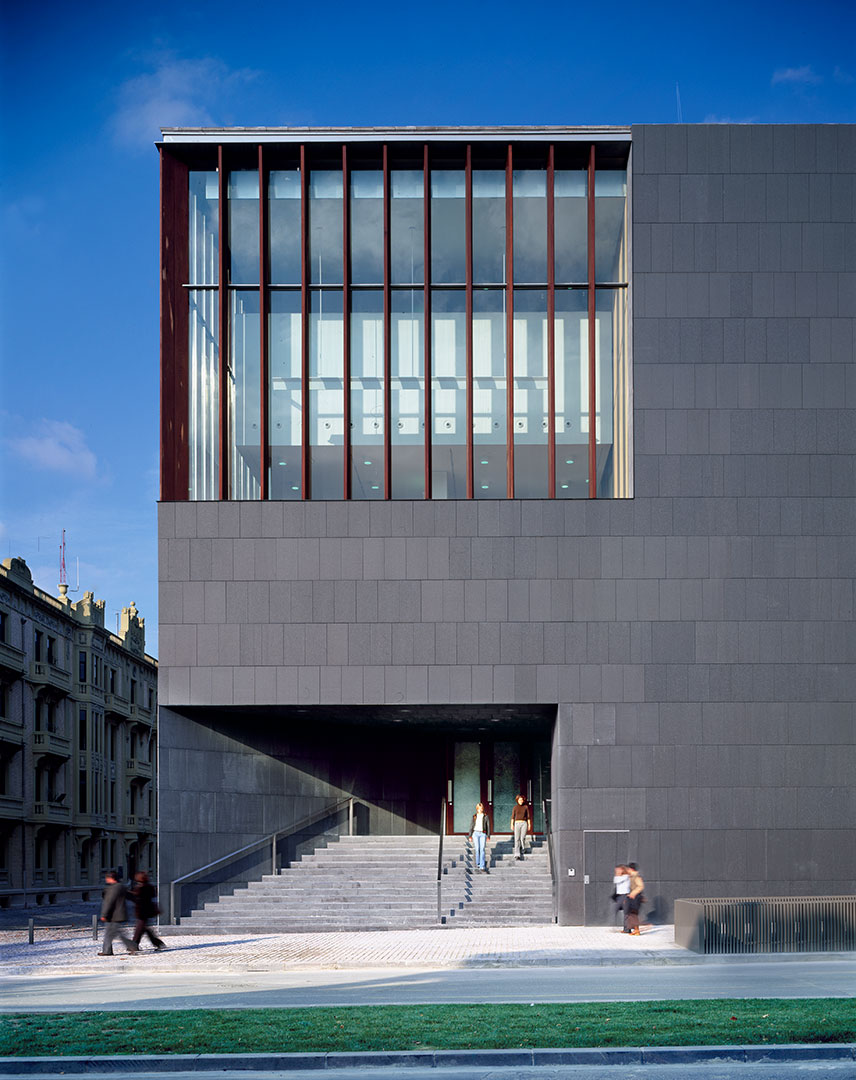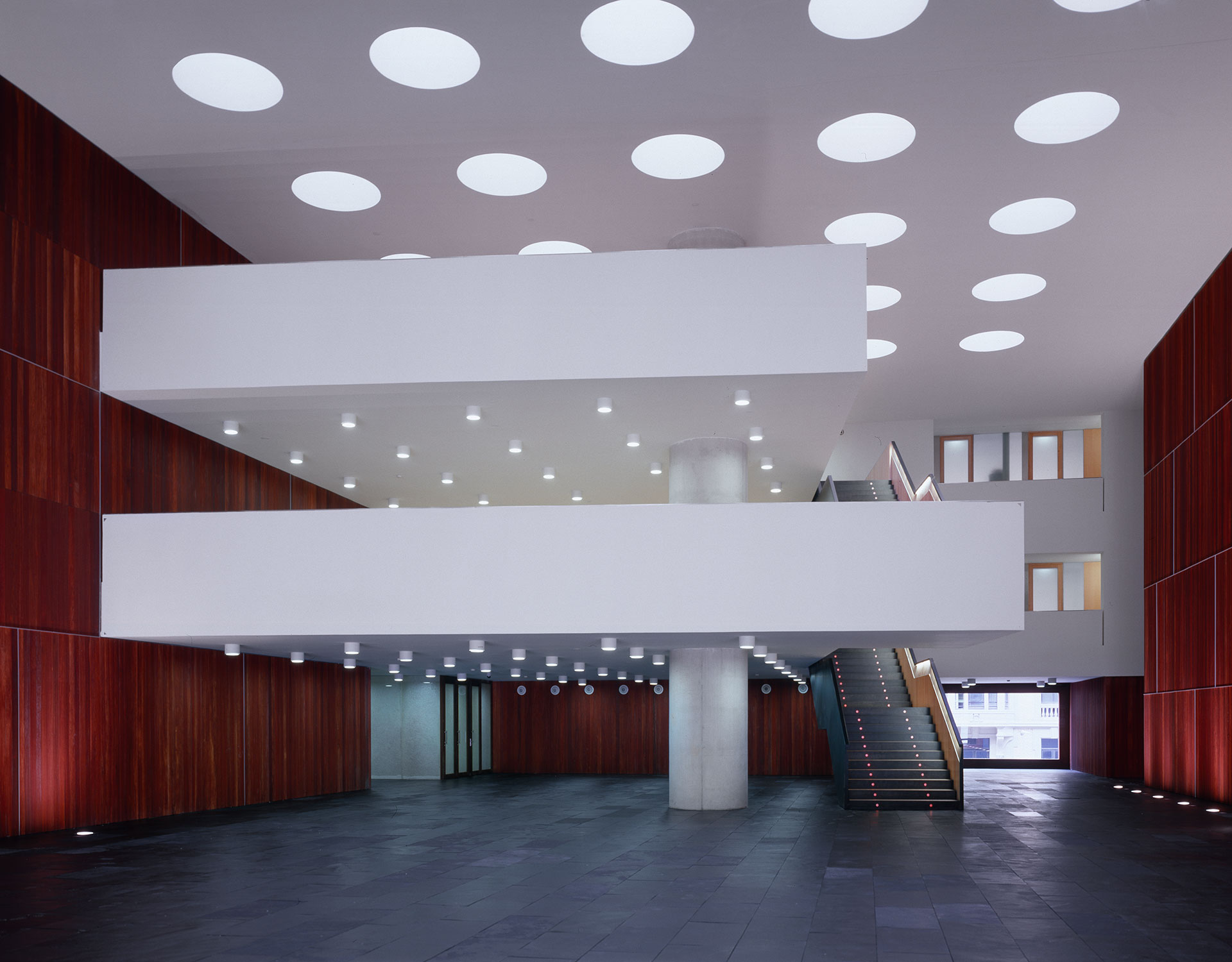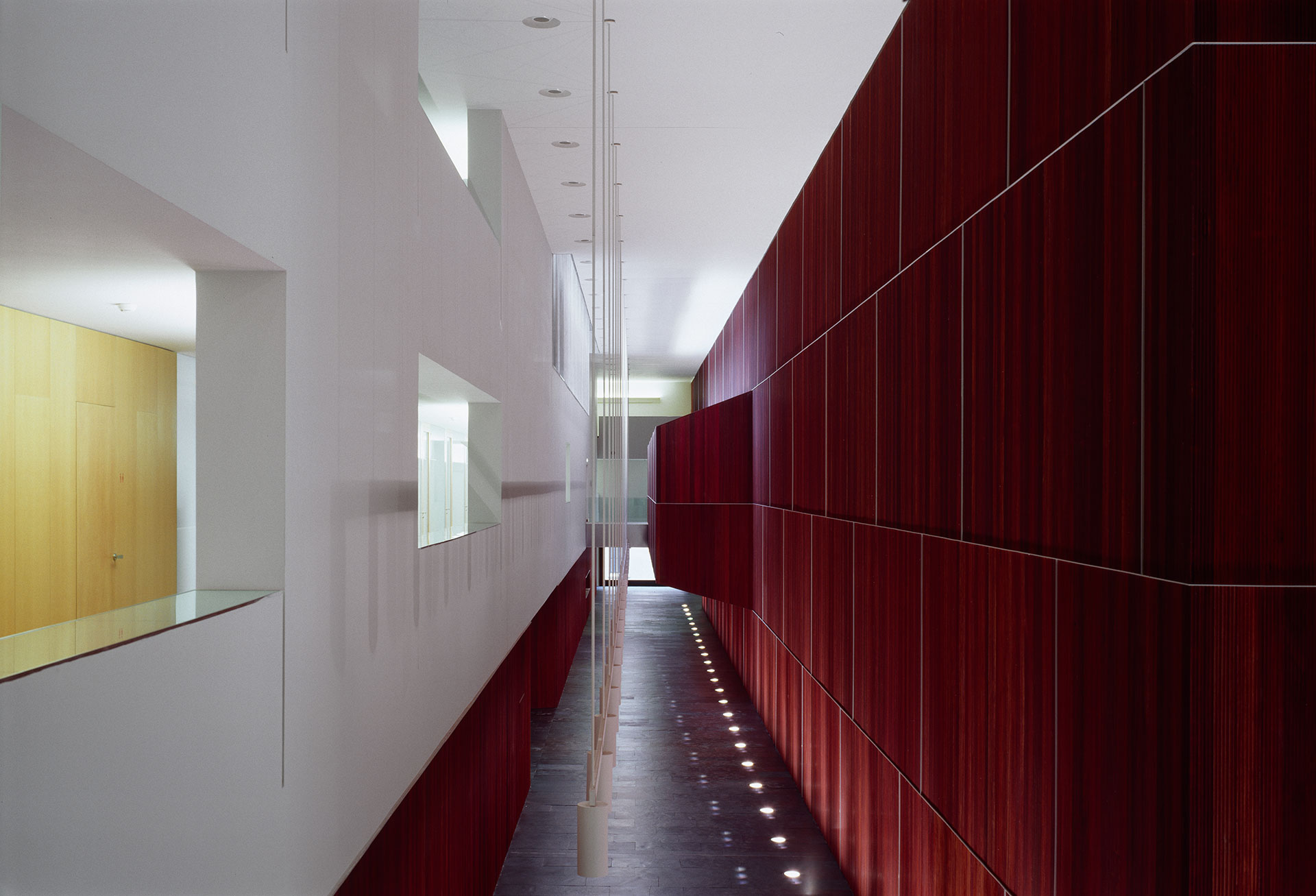Baluarte. Auditorio y Palacio de Congresos de Navarra
Se trata del proyecto más importante en términos cuantitativos y cualitativos realizado en la historia reciente de Navarra, situado sobre lo que fue la Ciudadela, una zona de transición entre el centro histórico y los ensanches urbanos. El solar objeto de la intervención se mantuvo vacío desde el derribo de unos antiguos carteles, por lo que en la memoria colectiva había quedado asociado a la imagen de gran espacio abierto.
Toda la propuesta gira en torno a una idea fundamental, que es la renuncia al proyecto de arquitectura autónomo, proponiendo en su lugar un conjunto con clara vocación urbana. Para ello, el edificio conforma un volumen en L, rodeando una gran plaza que se abre a los ensanches, a la vez que es capaz de generar un diálogo con la Ciudadela. Se opera entendiendo que la plaza y el edificio componen un único espacio, de modo que la superficie pavimentada exterior continúa en el interior de la planta baja del edificio, prolongando los espacios de exposición del centro de congresos.
Las salas son piezas autónomas configuradas según los cánones funcionales y dimensionales requeridos por su uso. Los espacios que rodean estas cajas son zonas vestibulares y de comunicación que los sirven y relacionan.
Uno de los brazos de la L está reservado a la sala principal, que sobresale en altura de la cubierta. En el ángulo que forma este ala con el otro brazo se ubica la segunda sala, con un aforo menor. Entre ambas se encuentra el acceso y vestíbulo central, un gran espacio de tanta altura como el edificio, generosamente iluminado por lucernarios centrales.
Todo el lateral que discurre paralelo a la avenida del Ejército se convierte en sala de exposiciones, tanto en planta baja como en el subsuelo, donde aparecen las ruinas del Baluarte de San Antón que da nombre al conjunto. Las salas destinadas a seminarios se sitúan en la planta alta. Otras tres salas, dedicadas a congresos poco numerosos o pequeños conciertos se encuentran bajo la sala grande, con acceso directo desde el vestíbulo. La mayoría de los servicios y apoyos de las funciones principales han quedado localizados en los sótanos primero y segundo, con las conexiones funcionales y circulaciones que unen estos usos con los auditorios y de manera especial con los escenarios.
El auditorio principal, con aforo para 1.744 personas, responde a un modelo tipológico relativamente convencional, a partir del encaje en planta del patio de butacas y el escenario en un rectángulo de proporciones 1 a 2. Su interior, revestido de paneles de haya en tonos claros, contrasta vivamente con el color oscuro de las paredes exteriores forradas de madera de ipe, igualmente utilizada en toda la carpintería exterior. El mismo criterio de coherencia entre materiales y espacios se extiende a la plaza, cuyo pavimento de granito gris adopta la forma de adoquines o placas, según se encuentre al exterior o a cubierto. Las fachadas se revisten de piezas de cuarcita negra, dispuestas en vertical con un desplazamiento en cada fila de un tercio de la anchura de la pieza
Ciudad
Pamplona. Navarra
País
España
